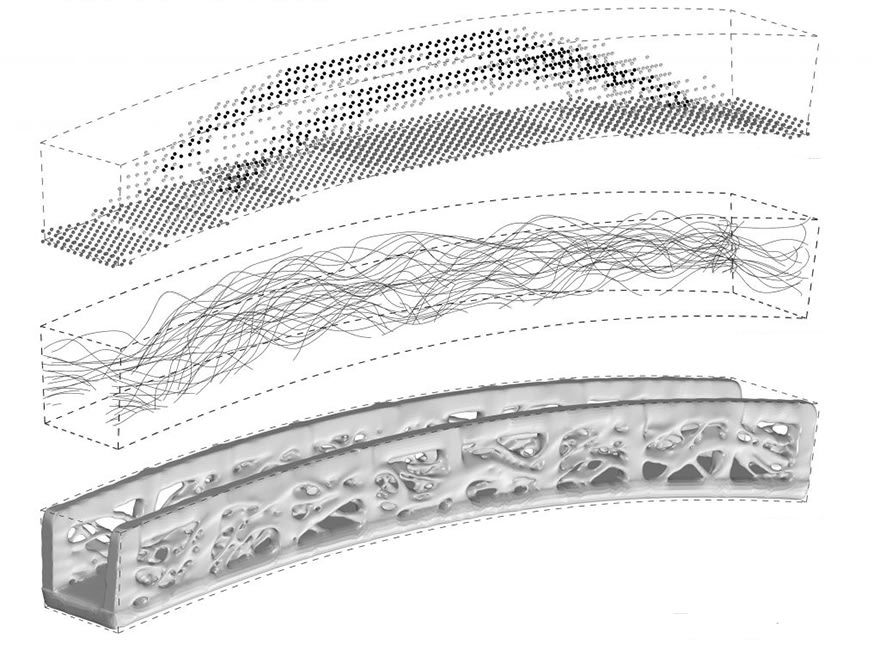The Institute of Advanced Architecture of Catalonia (IAAC) has created the world’s first 3D printed bridge, as the technology moves closer to the mainstream.
According to the institute this is the first time 3D printing technology has been applied in the field of civil engineering.
Built in the urban park of Castilla-La Mancha in Alcobendas, Madrid, the bridge is 12 metres long, 1.75 metres wide, and printed in micro-reinforced concrete.
As the bridge is in a public space, and open to the public to use, it had to meet all the appropriate building and safety legislation.
The form of the 3D printed bridge was developed through parametric design, which allowed the architects to optimise the distribution of materials.
The structural performance was maximised as the design places material only where it is needed, with total freedom of forms, maintaining the porosity due to the application of generative algorithms and challenging the traditional techniques of construction.
Building of the bridge was led by construction company Acciona. The scheme was developed by a multidisciplinary team of architects, mechanical engineers, structural engineers and representatives of the municipal administration, among them Enrico Dini, an expert inventor of large-scale 3D manufacturing and IAAC collaborator.

Comments
Comments are closed.














Hi,
Indeed it is an incredible innovation in the field of Civil Engineering and the world is changing its shape continually due to dynamic technologies. My question is about Micro-reinforced concrete nature. What those tiny particles and wiring like materials exactly shows in the 3D model?
Thanks
How long did it take to build the bridge?
Good morning,
The First 3D Printed pedestrian bridge of the world was manufactured in 2 months. After that it was assembled, transported to the site and installed. The manufacturing process started in August and the Bridge was finished in December. Regards. Daniel ([email protected])